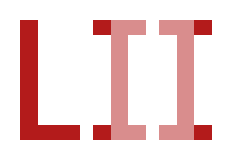- cross-posted to:
- politics@hexbear.net
- cross-posted to:
- politics@hexbear.net
The term “Separation of Powers” was coined by the 18th century philosopher Montesquieu. Separation of powers is a model that divides the government into separate branches, each of which has separate and independent powers. By having multiple branches of government, this system helps to ensure that no one branch is more powerful than another. Typically, this system divides the government into three branches: the Legislative Branch, the Executive Branch, and the Judicial Branch. The United States federal government and forty states divide their governments into these three branches.
In the federal government, Article 1 of the United States Constitution establishes the Legislative Branch, which consists of Congress. Congress, in addition to other enumerated responsibilities, is responsible for creating laws. As a general rule, the nondelegation doctrine prohibits the Legislative Branch from delegating its lawmaking responsibilities. Congress can, however, provide agencies with regulatory guidelines if it provides them with an “intelligible principle” to base their regulations on. For more information on the Legislative Branch, refer to “Congress.”
Article 2 of the United States Constitution establishes the Executive Branch, which consists of the President. The President approves and carries out the laws created by the Legislative Branch. For more information on the Executive Branch, refer to “Executive Branch.”
Article 3 of the United States Constitution establishes the Judicial Branch, which consists of the United States Supreme Court. The Judicial Branch interprets the laws passed by the Legislative Branch. For more information on the Judicial Branch, refer to “Judiciary.”
Separation of Powers in the United States is associated with the Checks and Balances system. The Checks and Balances system provides each branch of government with individual powers to check the other branches and prevent any one branch from becoming too powerful. For example, Congress has the power to create laws, the President has the power to veto them, and the Supreme Court may declare laws unconstitutional. Congress consists of two houses: the Senate and the House of Representatives, and can override a Presidential veto with a 2/3 vote in both houses.
The Checks and Balances System also provides the branches with some power to appoint or remove members from the other branches. Congress can impeach and convict the president for high crimes, like treason or bribery. The House of Representatives has the power to bring impeachment charges against the President; the Senate has the power to convict and remove the President from office. In addition, Supreme Court candidates are appointed by the President and are confirmed by the Senate. Judges can be removed from office by impeachment in the House of Representatives and conviction in the Senate. In this way, the system provides a measure, in addition to invalidating laws, for each branch to check the others.



that’s really funny